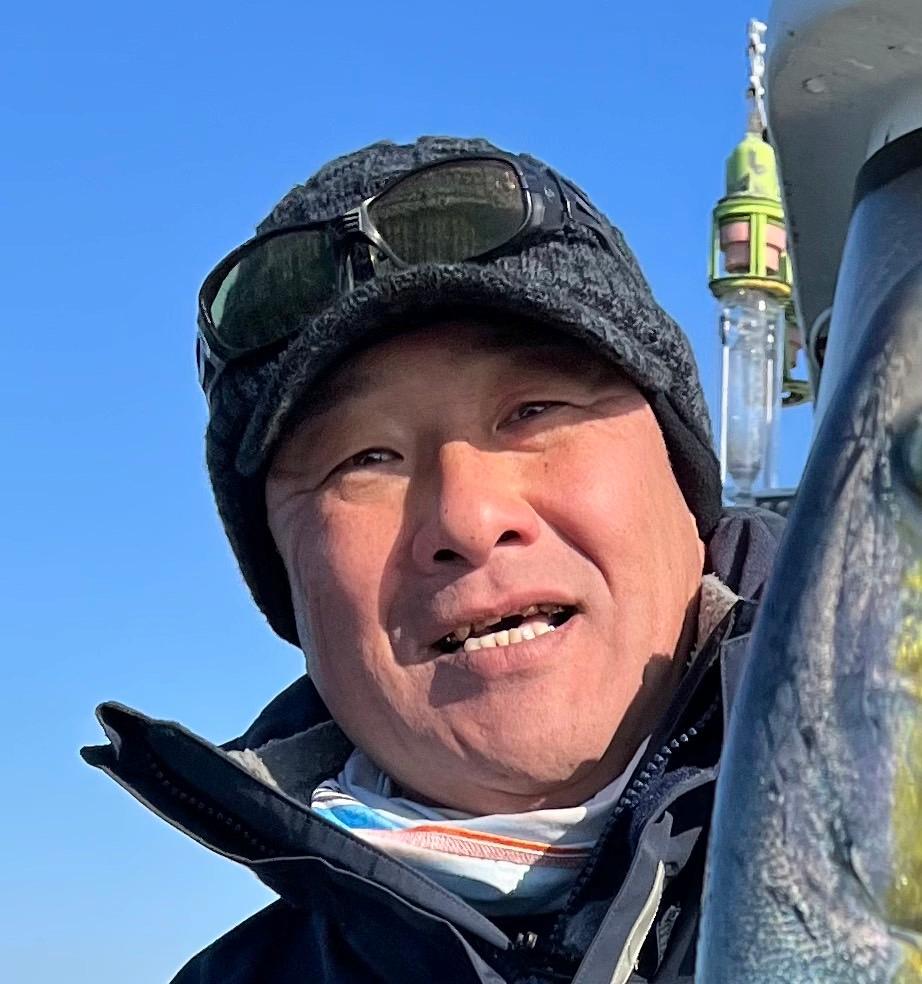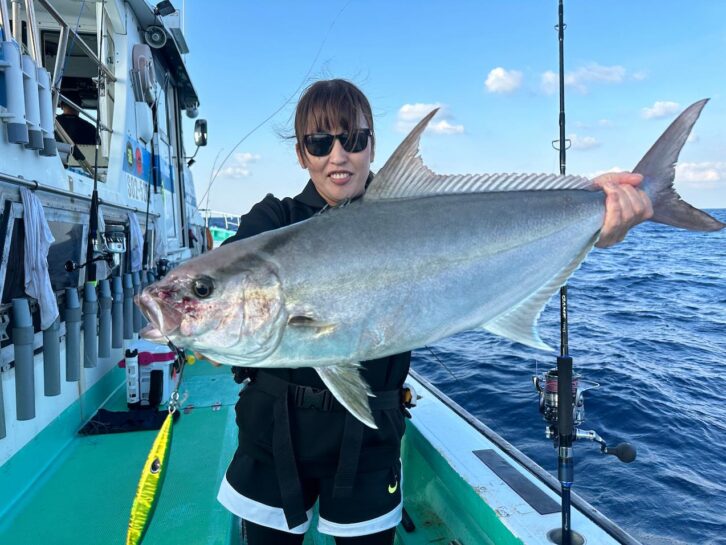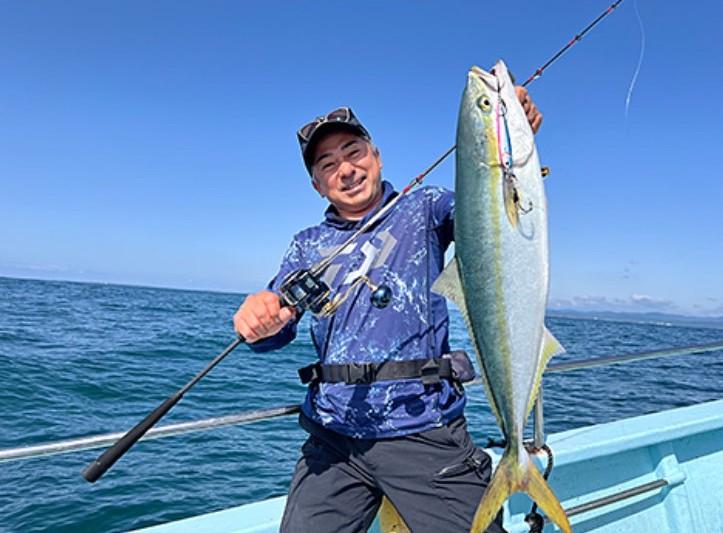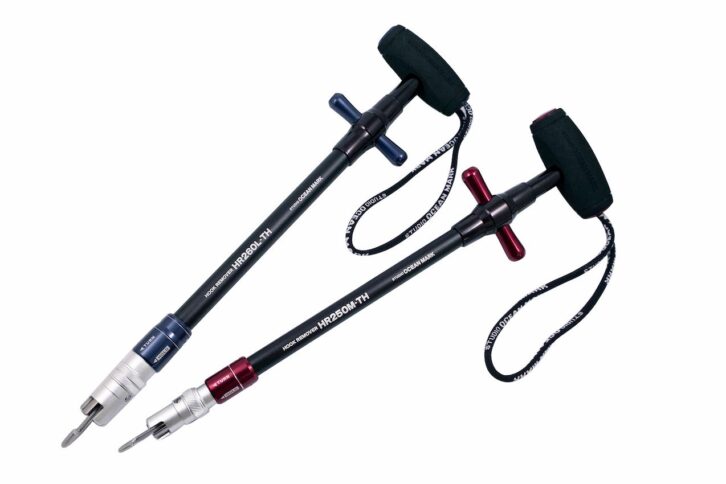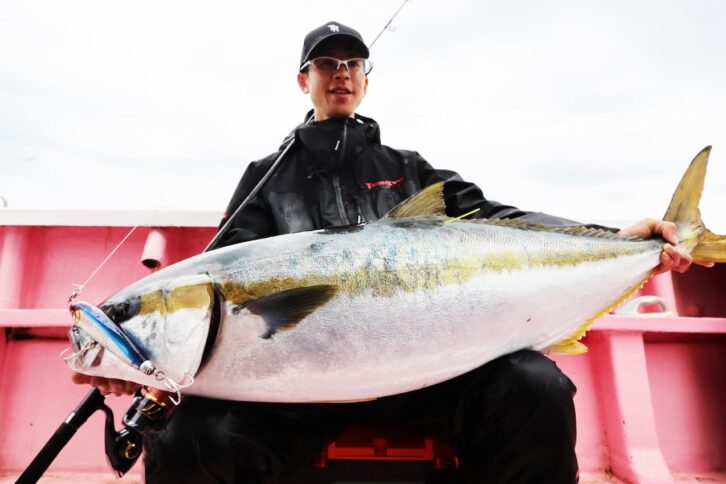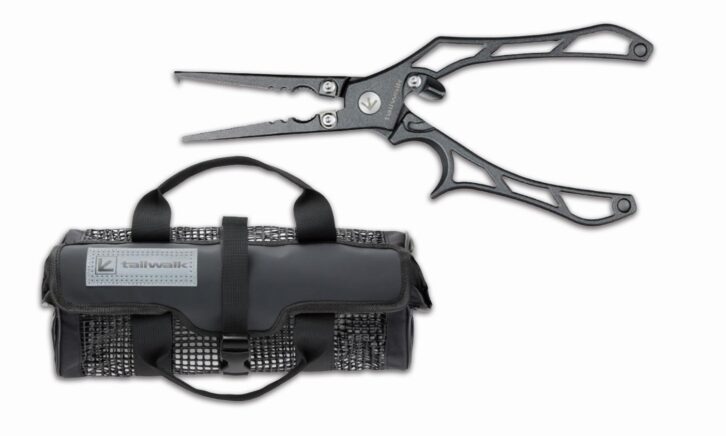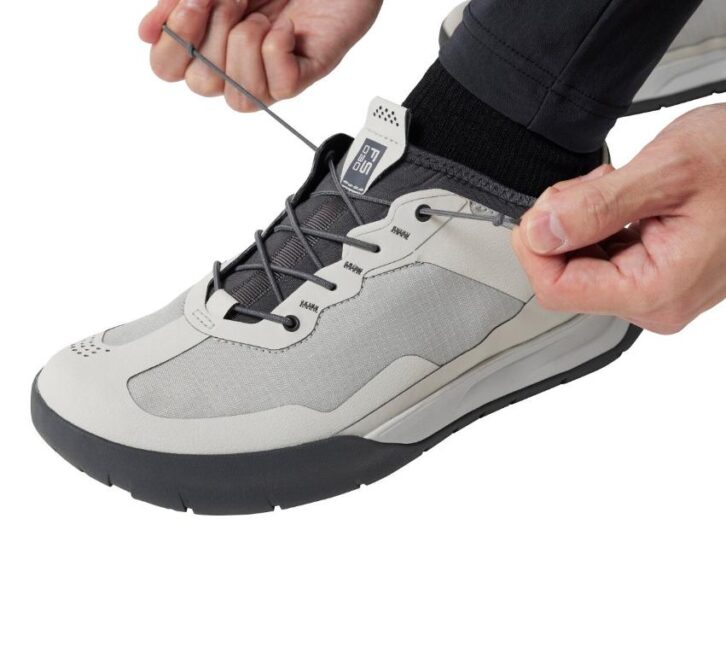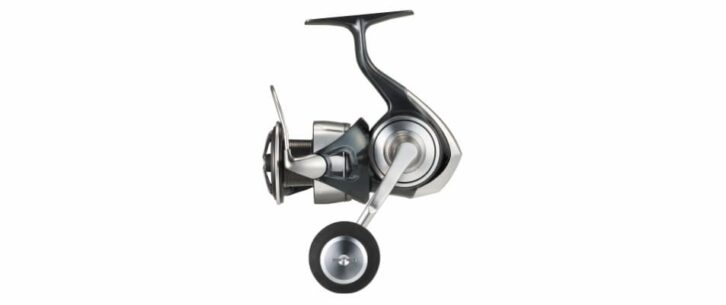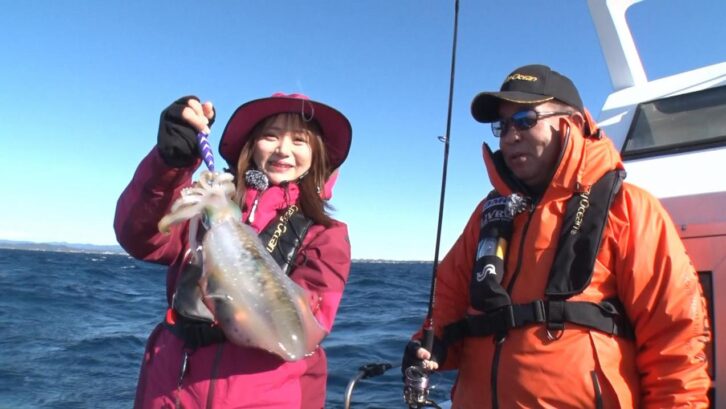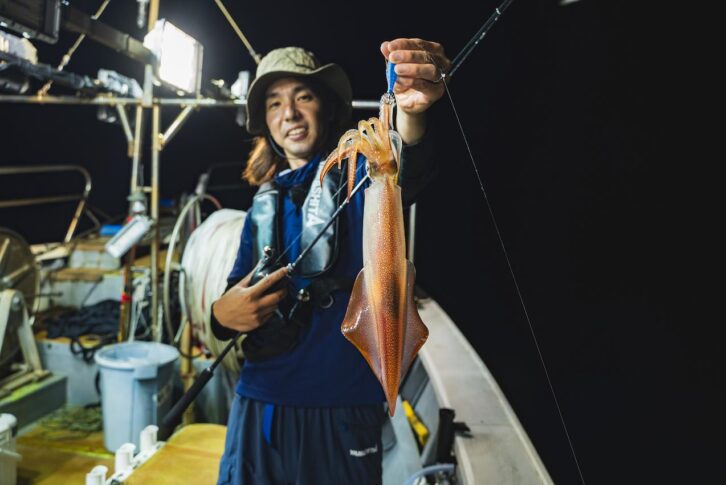Serialization: Kei Hiramatsu's Offshore World vol.21
Offshore actual fishing. Spring Sea of Japan. Enjoying yellowtail tops off Awashima, Niigata.
Casting game is hot in the Sea of Japan and Niigata area. After hearing about the situation in Niigata, where people were enjoying yellowtail top water fishing, we headed to the site right away. It was the first time for us to try to catch yellowtail around Awashima Island. He enjoyed a different way of catching yellowtail than he did for sunfish. I would like to tell you how it went this time.

INDEX
Awashima” in Niigata Prefecture.
Measures for a field that will be a first-time challenge.
Niigata Fishing Show” was held in February. I stood at the Penn Reel booth of Pure Fishing and served customers from the Hokuriku area, and I was impressed by the enthusiasm for offshore casting in the Hokuriku area. The people who visited the booth were always saying that yellowtail tops were interesting. The enthusiasm of the anglers was so strong that it led us to this mid-May fishing trip. This time, Pure Fishing organized a fishing trip with the staff of Fisher’s stores. Fisher’s stores are well known in the community, especially in Niigata. I was asked to show my skills as a professional Penn Reels staff member at the fishing event, and it was realized. The event was decided and I went to Niigata area in the middle of May. It takes about four hours by car from Kanagawa Prefecture, where I am located. It is easy to get there via expressway. The Niigata area is well known as a good field even from the Kanto area, so accessibility is probably one of the reasons. With this in mind, I headed for Niigata.
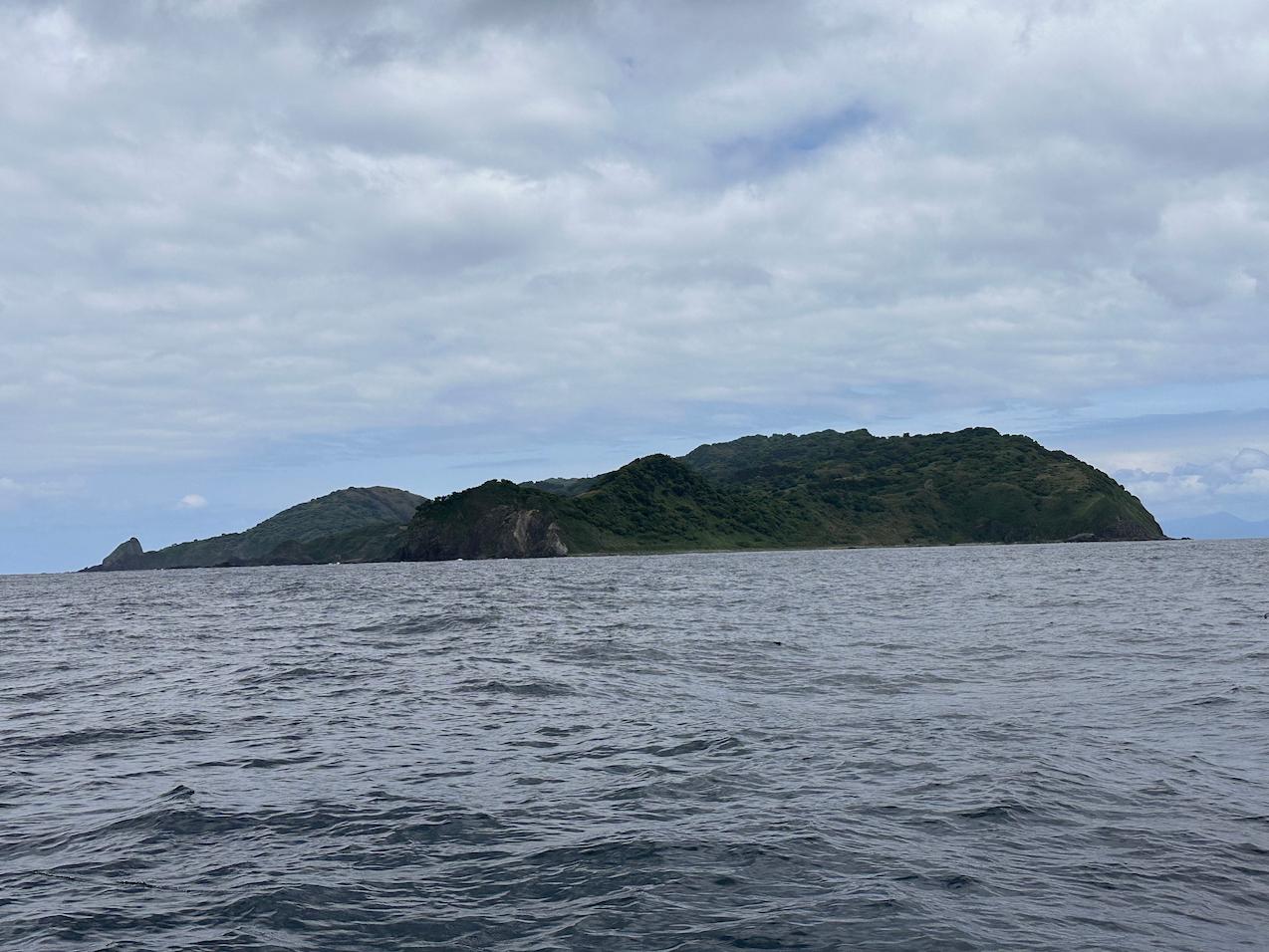
The field where we enjoyed yellowtail tops this time was around Awashima Island in Niigata Prefecture. It is one of the most popular points following Sado Island.

While standing at the Penn Reels booth at the Niigata Fishing Show, I was told about the yellowtail top, which led to this actual fishing with the Fishers store staff.
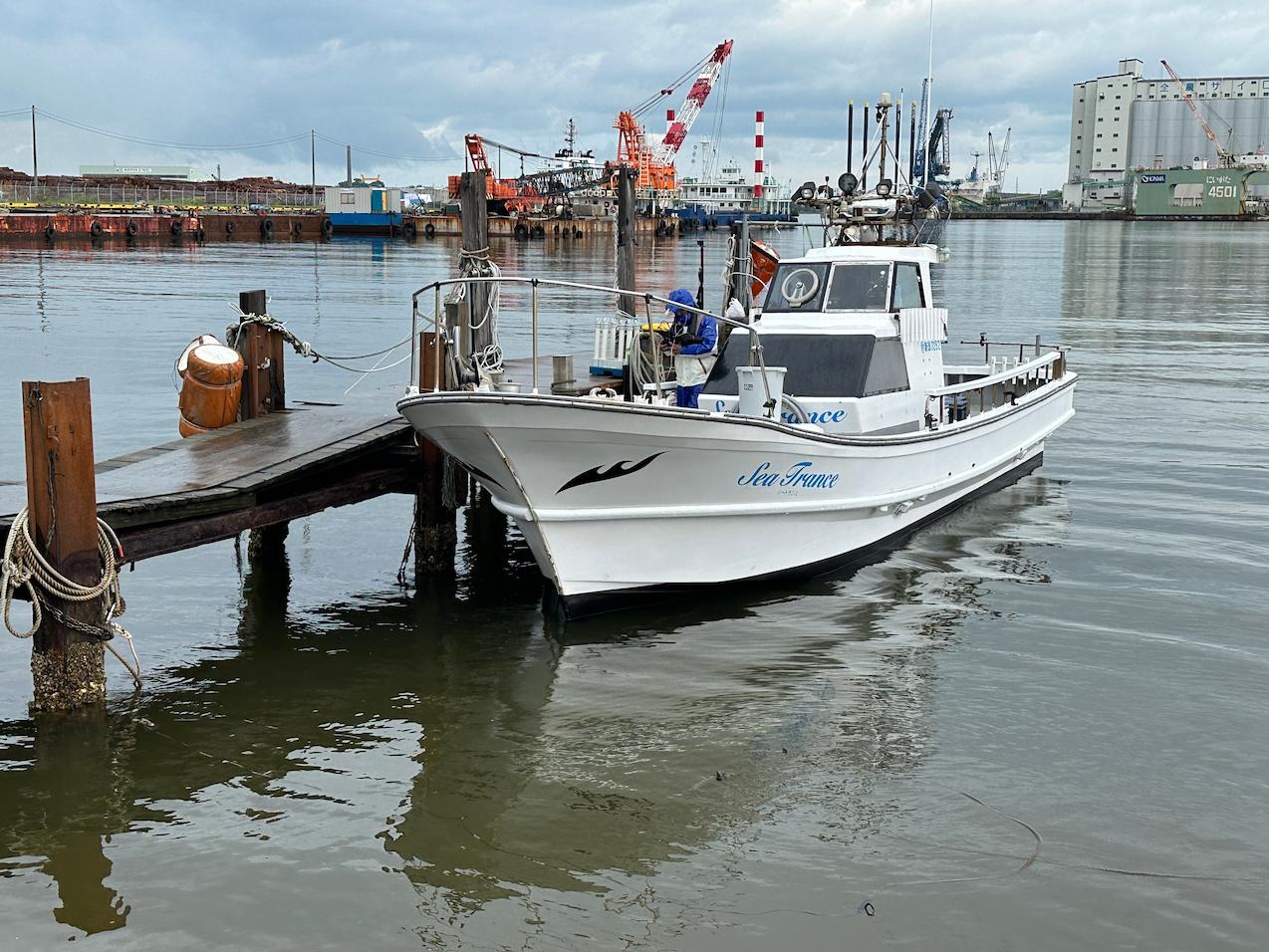
The boat was taken care of by “Seatrance,” a boat located in Higashi Port, Kitakanbara County, Niigata Prefecture.
We asked about the sailing conditions for the next day after 18:00. We were told that the wind and swell would remain until morning, so we decided to delay the sailing time. It was calm in the afternoon. If we missed this moment, the next day was forecast to be rough again, so we would have only one chance. We prepared our tackle early and prepared for the next morning.
We prepared the same tackle as when casting for sunfish. According to our preliminary confirmation, we were told that PE No. 5 class was the mainstream, but I prepared PE No. 8 balanced as usual. This is because the tackle balance in bluefish casting game is always set to the standard for sunfish, and I wanted to lure yellowtail in the style of targeting sunfish. In my experience, I have often caught yellowtail while targeting sunfish. So, assuming yellowtail tops, the idea is that it is the same as the sunfish game until you lure them out. However, I decided that I needed to think about how to get the fish to bite and how to aim after the fish chased. Therefore, we decided to use the same tackle balance as usual without worrying about the overpowering setting.


Local anglers use #5 PE tackle as standard, but I used #8 tackle, which I usually use when casting for sunfish. Yellowtail will bite even when casting for sunfish. Although it is overpowered, I wanted to test how to make yellowtail bite with this No. 8 tackle. I wanted to see how I could get yellowtails to bite with this No. 8 tackle. The casting rod in the photo will be released by Penn. The reel is an Authority Slammer 4DX.
How to cast for yellowtails around Awashima Island.
At 8:30 in the morning, we arrived at the pier of Niigata Higashi Port. The wind is blowing and there is a light rain mixed in. Somehow I thought the offshore area might still be rough. I was not feeling good. However, the staff at the Fisher’s store were very enthusiastic. They seemed to be able to read the situation because they were well versed in the field. This time, we are going to be taken care of by “Seatrance. At 9:00 a.m., we set sail slowly.
It takes about one hour to reach Awashima, the point of interest. The forecast was for rough seas, but although there was some swell as we left the East Port, the boat was able to proceed without pounding. The wind was cold against my body. The wind from the north made my body cold during the trip, but my spirits rose when we arrived at the point. Captain Yamada gave us detailed announcements about the terrain conditions, water depths, and fish-finding responses. The announcements were very easy to assemble, so it was easy for me to grasp the situation as it was my first time at the point. Now, it was time to start casting.
As mentioned above, I was aiming for yellowtail this time, but I grabbed the rod I use when targeting sunfish: a Penn Slammer 4DX8500 with PE No. 8 and a 21 cm plug as a lure. There was a reason for this. I wanted to confirm the plug approach at the first point with a lure I was familiar with. I wanted to check the balance between the tide and the lure, the contact from the fish, and the appeal of the lure. While checking these things, if there was a chase, I wanted to make a lure change to that situation to get closer to the fish.
Casting a Legrand Tango 21cm diving pencil. I cast in all 90-degree directions from the point where the tide was coming in and from the position of the tomo where I stood. I move the plug while reading the wave length. I dive jerk the plug in time to dive through the wave height. It is important to carefully probe not only in the same direction, but also in the right position, which is the position where the current is flowing with the tide. As the boat is flowing with the current, the key point is to pass the lure through the boat frequently while keeping track of the position where the lure is not being passed through.

Instead of just throwing the lure in the dark, cast and observe the field conditions. It is the same as usual jigging. The only difference is whether you are on the surface or in the water.
First contact was made. After confirming that the plug was brought in, I hooked it by reeling it in and brought it in. I could feel the fish was going berserk on the rod. As I had a bad premonition, the fish was caught in the middle of the reeling. The fish was not that big, but it was probably caught because of the size of the plug and the lack of hooking. However, I was now ready to build a new baitsystem. By reducing the size of the plug by a couple of sizes, and by enticing the fish to hook it firmly on the surface of the water, we should be able to eliminate the chances of it being caught. The first contact from first thing in the morning was a plus for me, even though I was caught.

Fisher’s store lure staffs who participated in the event casted one after another. Being local, they were quick to grasp the situation.
Hiramatsu-style must-have pattern.
I changed my tackle from a medium type KEI Hiramatsu casting rod with a 21cm plug to a 19cm plug of the same model. The rod was changed to a KEI Hiramatsu casting rod LMH with a fast taper for better bite. The medium type rod was designed for rough conditions and high waves, and was changed to a rod with a shorter jerk width, with an eye toward yellowtails that bite like a jiggling fish. Line and reel size were all the same; I used a Penn Authority 8500 with a normal gear ratio, but other than that, not much changed.
Casting plugs again. Decreased the lure size and shortened the dive jerk width to finely probe the lure action to show between wavelengths. Produce a fine pulling bubble while letting the rod tip plunge into the wave crest head. Pull and pause when the next wave height approaches the plug. The rhythm is controlled with the rod by watching the waves. Sometimes, the plug can also be reeled in to dive through the waves.
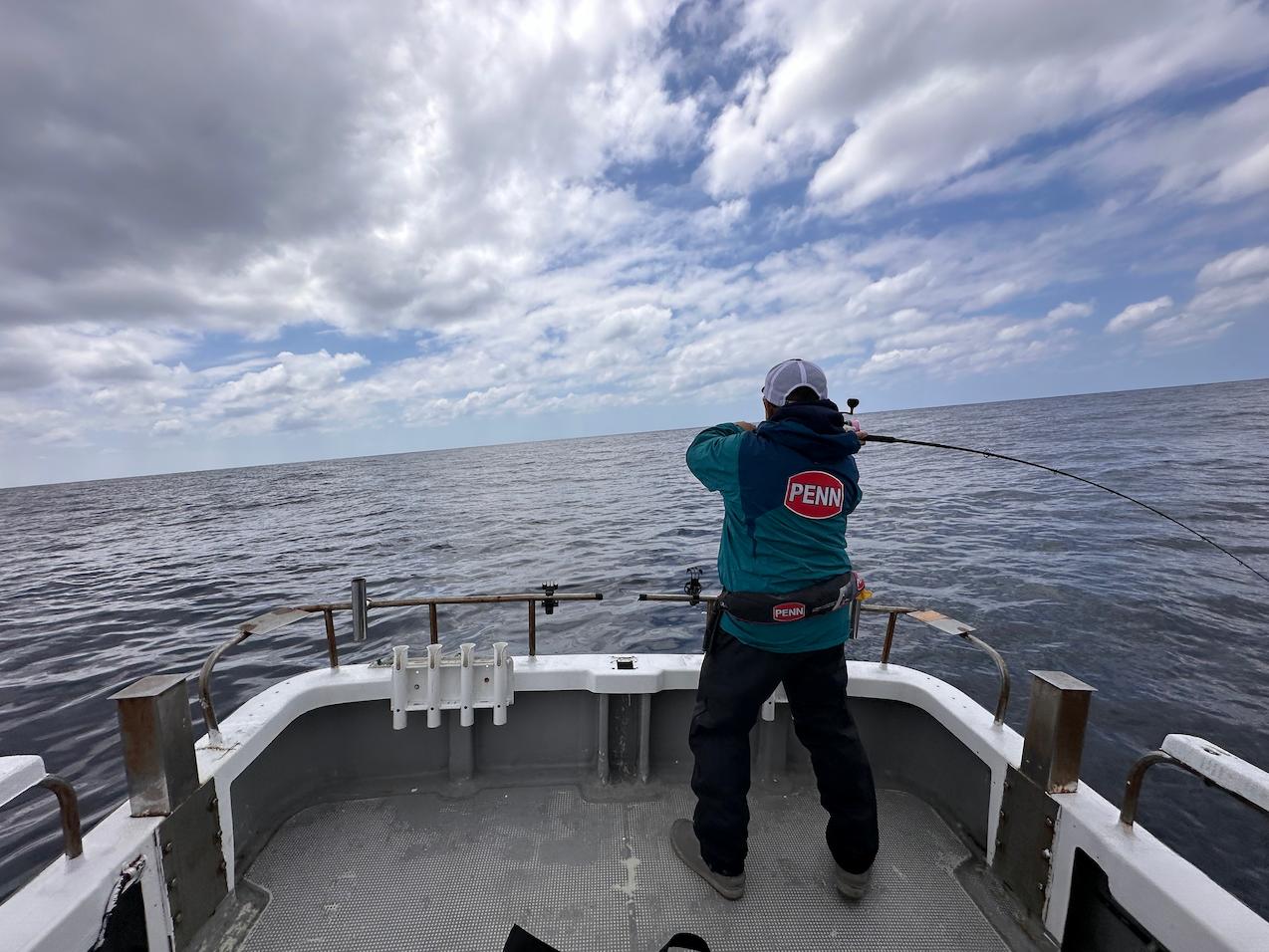
Instead of shooting a nabura, we probe with a lure while carefully manipulating the plug while observing the field conditions. The more you think about the field and fish behavior, the more interesting fishing becomes.
When we arrived at the point first thing in the morning, the wave height slowly calmed down. The captain tells us that there is a considerable reaction in the middle layer of the water. When I pulled the plug and made an appealing movement between the waves, a yellowtail (wrasses size) jumped out to the plug with great energy. The fast-tapered blung only bites well, and it was the first catch.
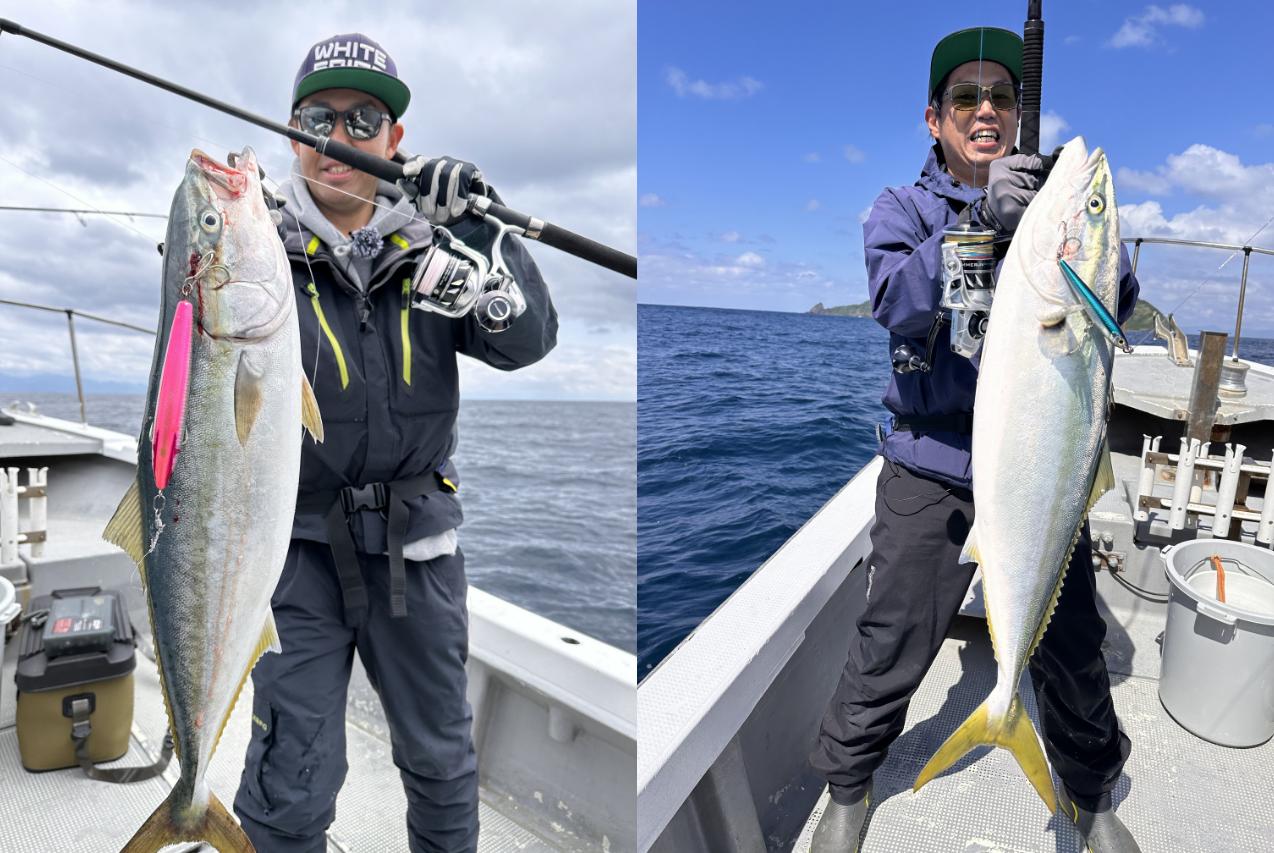
Fisher’s staff also caught yellowtail (wrasses) consistently.
I would like to explain a little about the difference between the feeding styles of yellowtail and sunfish.
Yellowtail catfish respond well to movements with a wide stroke range. This is because they have excellent instantaneous power when preying. They bite at once and try to return to their territory strongly. In contrast, yellowtails act in schools, and their predatory style is one of competition among yellowtails. While the yellowtail prey on the sunfish by pinning it down from the head, the yellowtail prey on the yellowtail by pecking it from the rear. This is especially noticeable when jigging.
If you use a hard jerk at the point where the yellowtail and the sunfish are in sync with each other, the sunfish will use their mouths, and if you entice them with a steady rhythm of one pitch, the yellowtail will bite. It is possible to distinguish between the two types of fishing. While jigging is a vertical fishing technique, surface fishing plugs have the same preying style. Therefore, when fishing for yellowtails, which are feeding on a single plug while rubbing it, you can increase your chances of catching them by using a wide stroke to entice them to bite and by being conscious of “showing” them how to bite. This is my “must pattern” that I can quickly determine and increase the number of fish I catch.
Yellowtail top. This time, I enjoyed casting game for yellowtail. Turn the school of fish in the middle layer to the top. Bring yellowtail close to the lure. Make them use their mouths. I was able to explain this sequence theoretically because I have been jigging for a long time to separate yellowtail and sunfish. In the surface game, there are different ways to target each species of fish, such as dolphinfish, bonito, tuna, and Spanish mackerel, and there is a clear distinction between yellowtail and sunfish. Although the yellowtail we targeted this time was in the size of a warasa class, it was very interesting to see the unique ways of targeting them. It was interesting to lure the fish to bite the bait, not to shoot the bait up to the fish. This time, I was able to enjoy it off the coast of Awashima in Niigata.
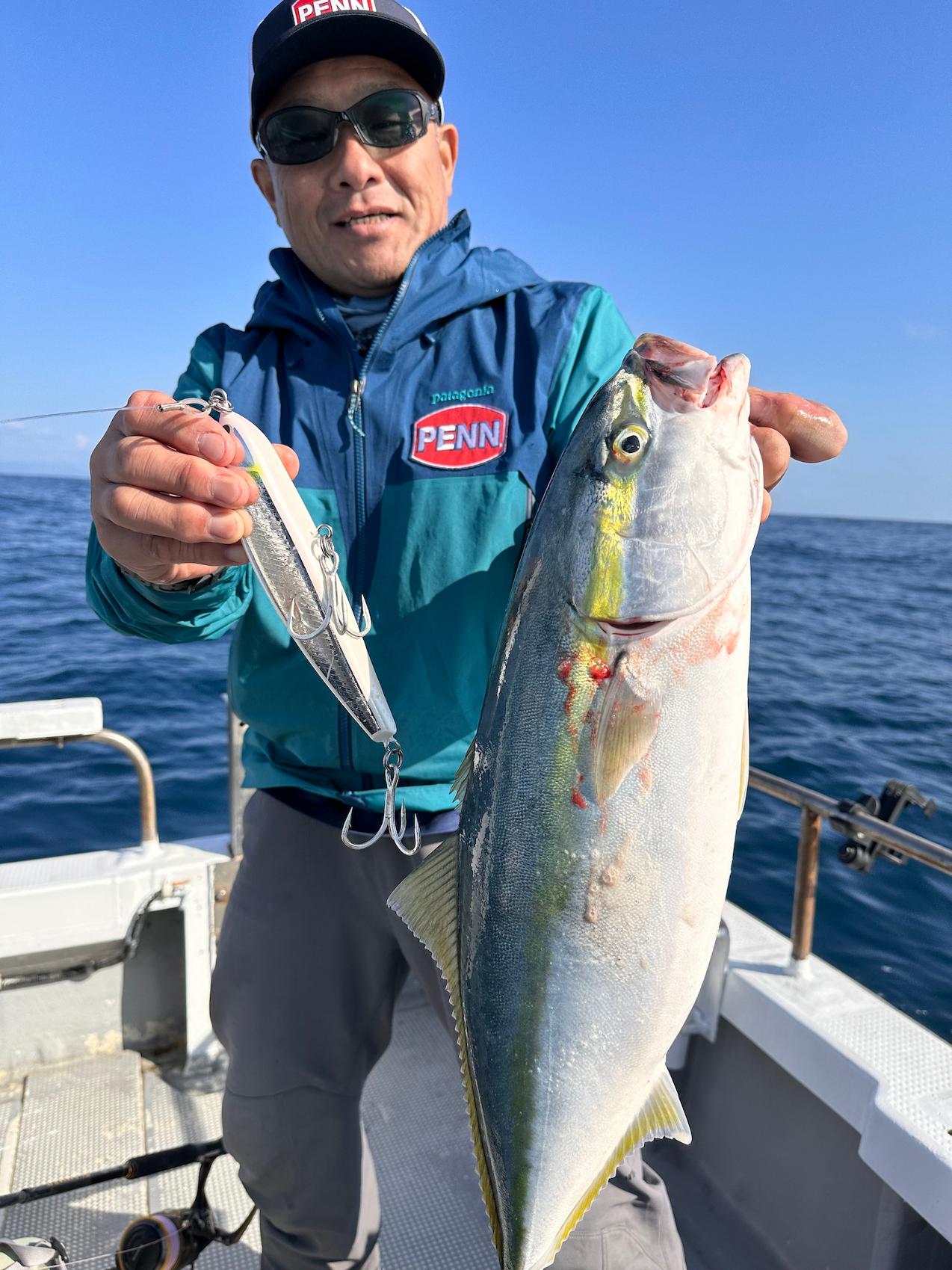

This class of fish responded to the lure in an interesting way during this fishing trip.
Casting tackle
Rod: PENN Slammer PHSS-71M
PENN Slammer PHSS-71LMH
(model supervised by Kei Hiramatsu) *Prototype
Reel: PENN Authority 8500HS
PENN Slammer DX 8500
Line & Leader: Sunline X8 Full Contact #8 + nylon shock leader 130lb
Lure: Legrand Tango 190, 210
Polarized Lenses: Glenfield ZEQUE “STELTH”

Captain Tatsuya Yamada of Seatrance and Ms. Tomomi Takahashi of Nakanori for their assistance.
Ship: Seatrance
Captain Tatsuya Yamada 080 9532 2935
https://www.sea-trance.com/
Instagram @sea.trance
Tackle inquiry
Goldic is closed on Tuesdays TEL046(252)6010
HP address: https://www.goldic.net/
Kei Hiramatsu’s official blog “Iibusa Diary
https://kei-hiramatsu.com/
Kei Hiramatsu facebook
https://www.facebook.com/hiramatsu.kei.1
X(Twitter)
@keitanhiramatsu
YouTube
Kei Hiramatsu channel


